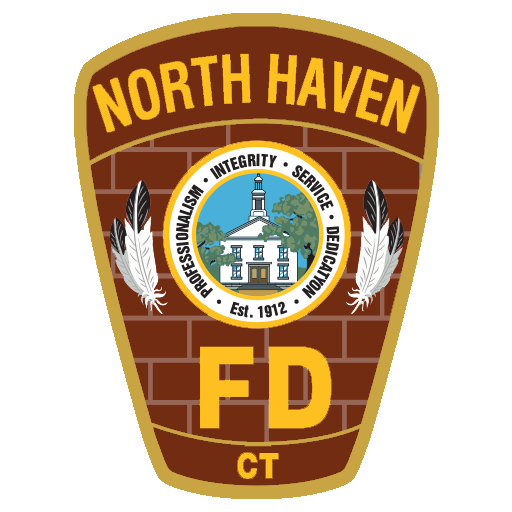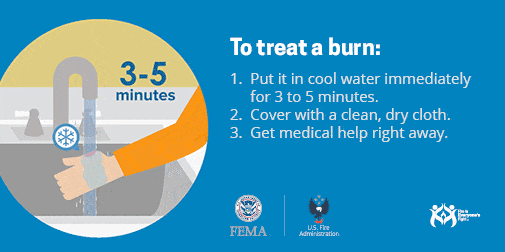Burn Awareness Week is Feb. 2-8
NORTH HAVEN — Chief Paul Januszewski would like to remind North Haven residents of some safety tips and precautions as Sunday, Feb. 2 begins National Burn Awareness Week.
Each year, the American Burn Association (ABA) develops educational resources for National Burn Week, which can be found on their website. The theme for Burn Awareness Week 2020 is: Contact Burns – Hot Surfaces Damage Skin.
According to the ABA, in 2011-2015, children under the age of five were 2.4 times as likely as the general population to suffer burn injuries that require emergency medical treatment. Older adults are also at an increased risk of suffering contact burn injuries.
“Everyday objects that become hot can cause severe burn injuries if they are touched,” Chief Januszewski said. “Burn injuries can be very serious and result in permanent tissue damage which is why it’s important to know how to prevent burns and to render first-aid if a contact burn does occur.”
Chief Januszewski would like to offer the following tips and information from the American Burn Association:
Prevent Burns
- Keep hot foods and liquids away from table and counter edges. Keep hot liquids away from babies and small children. Put drinks and soups in the center of the table away from curious fingers.
- Children under the age of five face a higher risk of non-fire cooking burns from cooking equipment, tableware such as bowls and cups and cookware such as pots and pans. Have a “kid-free zone” of at least three feet around stoves, grills, campfires and fireplaces. This protects kids from cooking liquids, grease and hot metal.
- Use the back burners of the stove top to prevent children from reaching up and touching hot pots and pans. Turn pot and pan handles toward the back of the stove so they cannot be easily reached or tipped.
- Use non-slip placemats instead of tablecloths if toddlers are present – young children may use the table cloth to pull themselves up causing hot food to spill down on them. Tablecloths can also become tangled in crutches, walkers or wheelchairs, causing hot liquids to spill.
- Don’t wear loose clothing near fire, grills or stoves.
- Never hold a child while you are cooking, drinking a hot liquid or carrying hot foods or liquids.
- Be sure to turn off unattended hot appliances such as irons or hair straighteners. Turn off hot items such as heating pads or blankets off before going to sleep.
- Supervise young children in the bath and face them away from faucets. Babies and toddlers can turn on hot water when you turn your back.
- Protect your feet by wearing shoes when walking on hot pavement or sand. Keep pets off hot pavement.
First Aid for Burns
- Stop, drop and roll if you or your clothing are on fire.
- Remove burn victims from the immediate area of danger.
- Stop the burning process: cool the burn with running cool (not cold) water for at least five minutes.
- Remove all jewelry, watches, rings and clothing around the burned area as soon as possible.
- Cover the burn with a sterile bandage or clean cloth. Wrap the burned area loosely to avoid putting too much pressure on the burn tissue.
- Do not use any butter, ointments or other home remedies on the burn. Such substances may trap the heat in the tissue and make the burn worse.
- Minor burns will usually heal without further treatment. Call 911 immediately if the victim’s burn results in a large blister, if the burn area appears to be charred, blackened or white or if the skin texture becomes leathery. These characteristics may mean the victim’s burn is a second or third degree burn and requires immediate medical attention.
###

